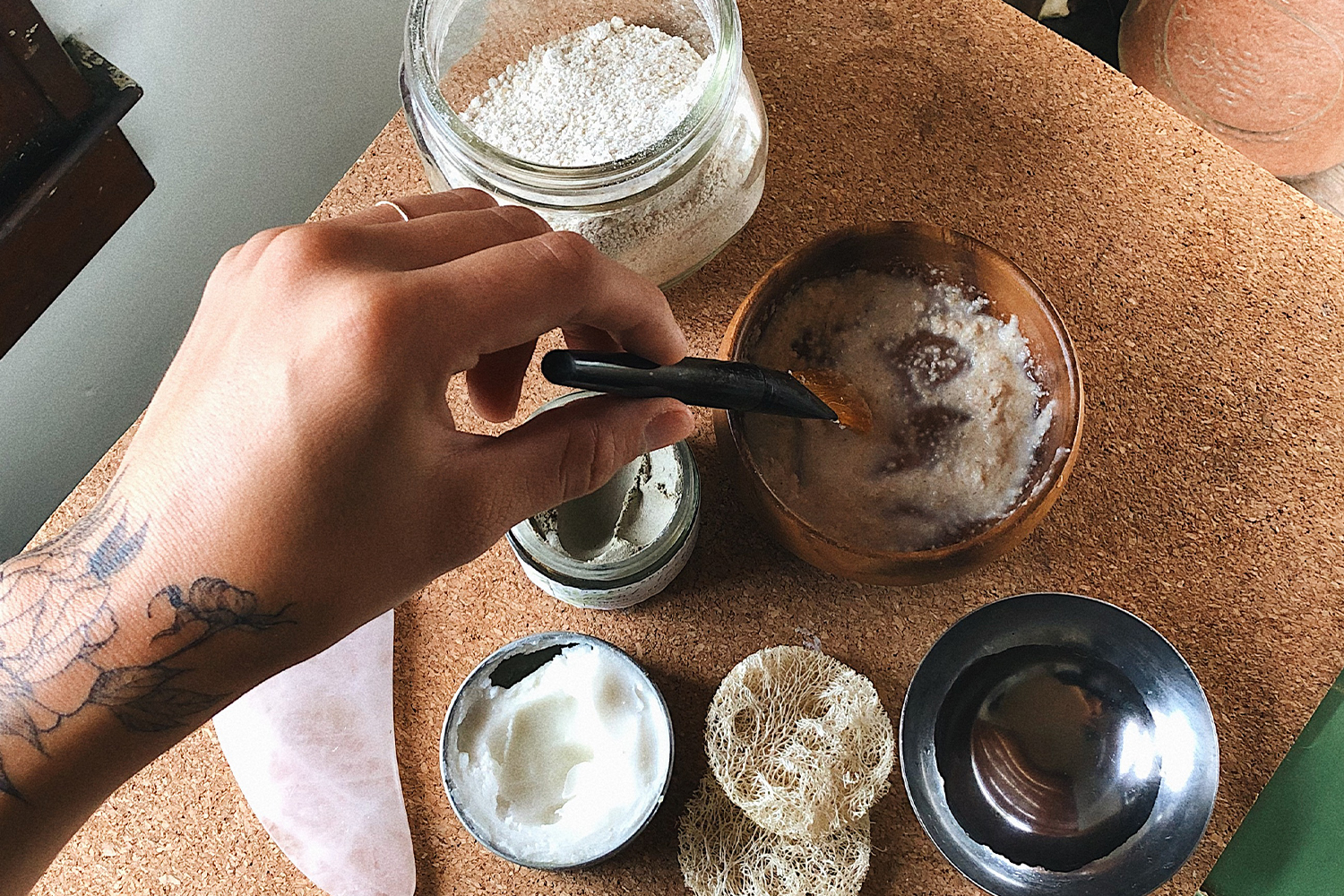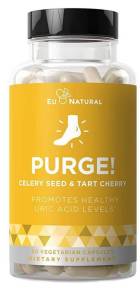What is Sustainable Skin Care?

Environmental consciousness is now mainstream, with more and more people understanding the impact of our daily consumer choices. The wellness and beauty industry is notoriously wasteful, and in the U.S., not tightly regulated. The beauty industry has faced backlash for ingredient toxicity, unsustainable practices, environmental impact, and being a main culprit in ocean plastic pollution due to packaging waste; but on an exciting note, the beauty industry is becoming more environmentally friendly and the natural sector is growing by the day.
What Does it Mean to Live Sustainably?
Living sustainably means making choices that have less of an impact on the environment and human livelihoods. Sustainable skin care is essentially choosing products that will meet our skin and beauty needs, without harshly impacting the environment or safety of humans.
We all want to make good product choices, for the environment and for ourselves. It can definitely be overwhelming to think of all the potential impacts, the certifications you should follow, the ingredients and the list goes on and on… But it doesn’t have to be difficult to build a sustainable skin care routine.
Remember, we vote with our dollars - so choosing a better product makes the largest possible impact! It is our responsibility to make environmentally conscious choices… This involves a little bit of planning first…
How to Make Your Skincare Routine More Sustainable
It’s super simple list of ways to make little swaps for a huge impact. When I search for products, I tend to either buy in bulk, or look for the following.
Choosing Sustainable Packaging
-
Reusable Packaging
Glass bottles are multi-use, just clean off the label and clean out with a light 1-2% bleach solution (1 tsp bleach to 1 gallon water).
Jars, spray bottles, lotion bottles and more can be reused for D.I.Y. glasses or for bulk products!
-
Recyclable Packaging
Glass and metal are the easiest to recycle, but plastic can be recycled as well.
Try to choose PET, PETE (polyethylene terephthalate) HDPE (high-density polyethylene).
-
Reusable and Compostable Packaging
Tons of products are available with natural ingredients, in bulk to fill your reusable or compostable containers:
- clays
- flour
- botanical powders
- oils
- soaps
- bar soap
Company Mission and Transparency
Knowing a company’s mission can help distinguish a sustainable product and increase overall impact of your purchase. If they are conscious of environmental impact, typically they aim to be more sustainable, give back to communities or the environment or mitigate social impact.
How to Look for Sustainable Ingredients in Skincare Products
This is a bit of a loaded statement - ingredients lists can induce anxiety real quick, but let’s keep it very simple. It is absolutely not beneficial to choose a “no chemical” product - because when we think of overall sustainability, sometimes a synthetic ingredient is better for the skin and mitigating ecological impact.
-
Are the Ingredients Natural?
I tend to focus on simple ingredient lists, for the general products like cleansers, exfoliants, moisturizers and sprays, less can be more. Exfoliants, serums, specialty masks and spot treatments can be more intensive and require synthetic materials.
-
Are the Ingredients Easily Grown?
Easily grown ingredients, and plants that aren't intensive to grow. I try to take this one lightly, but it’s an incredibly effective step - I wouldnt buy a product with real sandalwood, regardless of the sustainability status because it’s a tree that takes over 30 years to grow for harvest - instead I would choose Vetiver, it’s a deep woody musky scent reminiscent of Sandalwood but it’s a quick growing grass that’s actually used for ecological restoration, soil protection and storm damage prevention because of it’s deep roots (grows ~13 feet deep in the first year alone). Talk about a double impact!
Other ingredients I love: brown rice flour, chamomile/lavender/hibiscus/rose powder, aloe vera gel, etc.
-
Choose Bulk Ingredients
Bulk ingredients replacing products - you can find an incredible amount of ingredients in bulk sections at whole foods or local health food stores or grocery shops. For example, instead of a prepackaged body exfoliant with plastic by products like micro exfoliant beads, you can choose a botanical powder, clay, salt, sugar, etc.
Typical Skin Care Routine
Below is a list of every step in a typical skin care routine, the products and tools used and tips to make that specific step more sustainable. Bolded steps are required, others are optional:
-
Pre-Cleanse (Balm, Cleansing Cream, Oil, etc.)
- To remove makeup, dirt and topical residue
- Pick a glass or metal container, a balm or simple oil can be bought in bulk.
-
Cleanse (Bar Soap, General Cleansers)
- To deeply clean oil, sebum, dirt and clear pores
- Pick a glass or reusable container, or use a gentle bar soap for zero waste.
-
Tone (Witch Hazel Based Toner, Hydration Spray, Hydrosol)
- Toning regulates the skins pH, bringing it from stripped alkaline state back to a natural slightly acidic state. This protects your skin’s oil barrier.
- Pick a glass or reusable container, hydrosols and witch hazel can be bought at bulk stores.
Most Hydrosols are sustainable because they are byproducts of essential oil production, but I love Rose, Lavender, Peppermint, Vetiver, Turmeric or Calendula.
-
Exfoliation (Clays, Cleansing Grains, Botanical Powders)
- This removes dead skin buildup and any excess product left behind. Your skin requires regular exfoliation to heal and renew itself.
- Pick a scrub in a glass jar or degradable bag. You can use bulk botanical powders, clays, or brown rice flour found in bulk sections.
-
Mask (Gel, Clay, Aloe Vera, etc.)
- Depending on your skin’s condition, a topical mask can provide vitamins, soothing, moisturizing, etc.
- Get a concentrated mask, or a product in a multi use reusable jar. Try to avoid sheet masks that aren't reusable, take an old t-shirt, cut to face size and soak in a small dish of custom D.I.Y. mask solution and toss in the wash! You can also use botanical powders, clays, aloe vera gel, oils, etc.
-
Tone
- Tone again, this step regulates skins pH so every time you use a harsh product it will help. Don’t overuse!
-
Serum
- Provides a super dose of vitamins / ingredients to support a specific condition. Always apply a serum before a moisturizer to lock it in (always apply thin to thickest product).
- Choose a product in a reusable container, or that has more in it because typically serums come in small amounts and plastic containers… (which I sometimes find on the beach).
-
Moisturizer (Oil, Cream, Balm, Gel, etc.)
- Necessary to keep skin healthy, moisturized skin is plump and refreshed looking.
- Pick a glass or reusable container. You can also buy bulk oils and re-fill containers with oils (sesame, grapeseed, sunflower, olive, hemp, etc) or make a D.I.Y. body butter or infused oil.
Typical Skin Care Tools
I love choosing products that are easily degradable like hemp, bamboo, cellulose, etc. or that can be reused for a long time.
-
Sponge / Makeup Remover Pads / Towels
- cellulose sponges
- exfoliating natural fiber pads
- makeup removers
- reusable pads
- bamboo towels.
-
Facial Massage Tool
Invest in a tool that’s easy to wash and that you can see using long term. I love Gua Sha tools (just make sure you know how to use it correctly!)
-
Mask Bowl & Brush
I love going to salvation army or thrift shops for cute wooden, bamboo or glass bowls to mix my masks in - for the brush, bamboo is likely the best option!
Dana Cutolo
Dana Cutolo is an herbalist, esthetician and conservation biologist focused on sustainable beauty + wellness. While working in the field, she saw the devastating effects of deforestation first hand, and realized that our decisions as consumers are incredibly impactful; so, she created Ny’Ala as a way to offer a clean and sustainable products and a way to contribute to reforestation.
Don't Miss a Thing!
Get the latest articles, recipes, and more, when you sign up for the tasteforlife.com newsletter.

